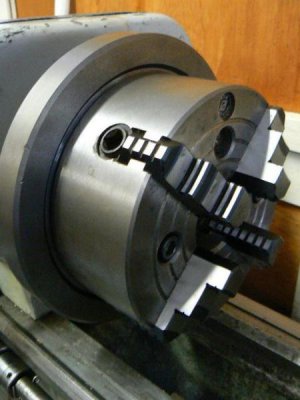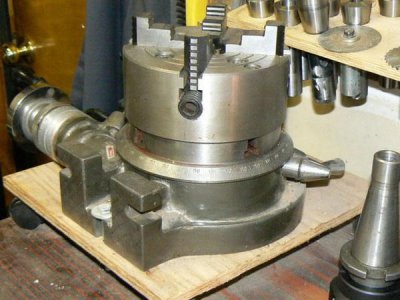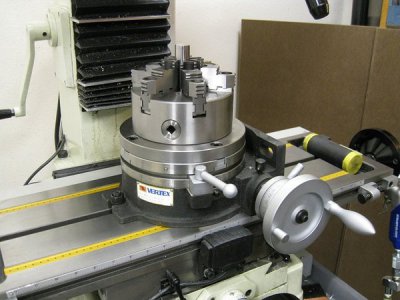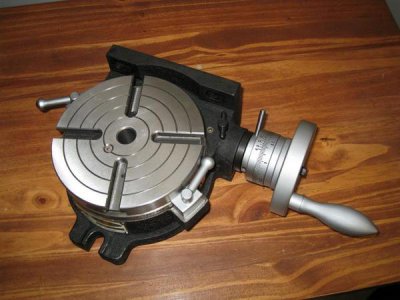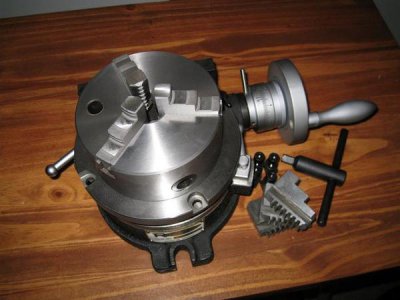- Joined
- Feb 5, 2015
- Messages
- 662
If you really, really can only afford one chuck at the moment then, in my opinion, it's a no-brainer, it has to be a 4-jaw. But if you insist on the self-aligning 3-jaw type, then there are other ways to secure rectangular parts on a rotary table:
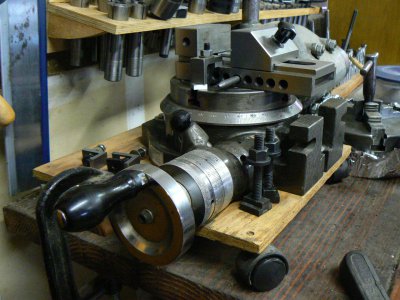
In these photos, a 3 inch toolmaker's vise is clamped to the rotary table. (The clamps are left loose until the vise is tapped into position to align the desired work axis to the rotary table spindle.)
FWIW when this heavy rotary table isn't in use, it is parked on a plywood stand (with casters). This allows me to roll the rotary table along the workbench to the closest location of the mill on which I want to mount it, saving my back from potential damage
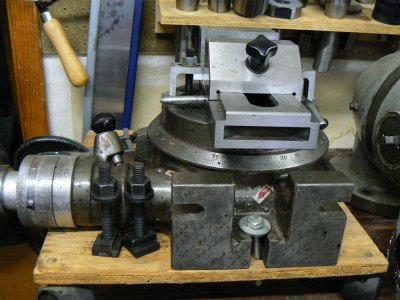
Some notes on toolmaker's vises and a useful modification can be found here:
http://www.hobby-machinist.com/threads/improvement-on-toolmakers-vise.32564/#post-274986

In these photos, a 3 inch toolmaker's vise is clamped to the rotary table. (The clamps are left loose until the vise is tapped into position to align the desired work axis to the rotary table spindle.)
FWIW when this heavy rotary table isn't in use, it is parked on a plywood stand (with casters). This allows me to roll the rotary table along the workbench to the closest location of the mill on which I want to mount it, saving my back from potential damage

Some notes on toolmaker's vises and a useful modification can be found here:
http://www.hobby-machinist.com/threads/improvement-on-toolmakers-vise.32564/#post-274986
Last edited:


